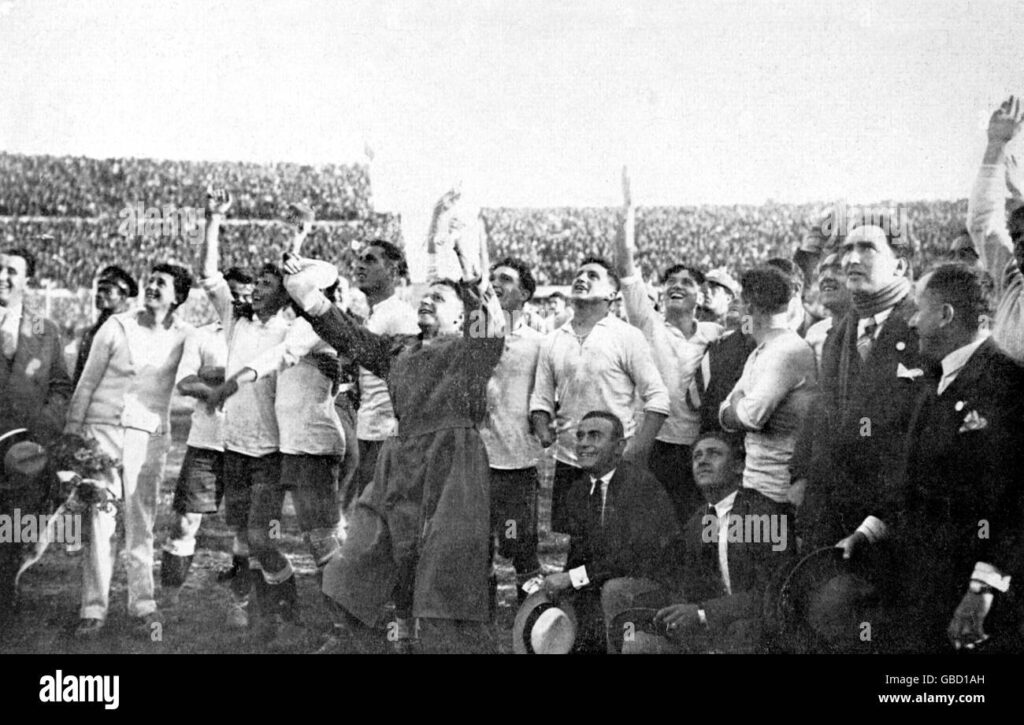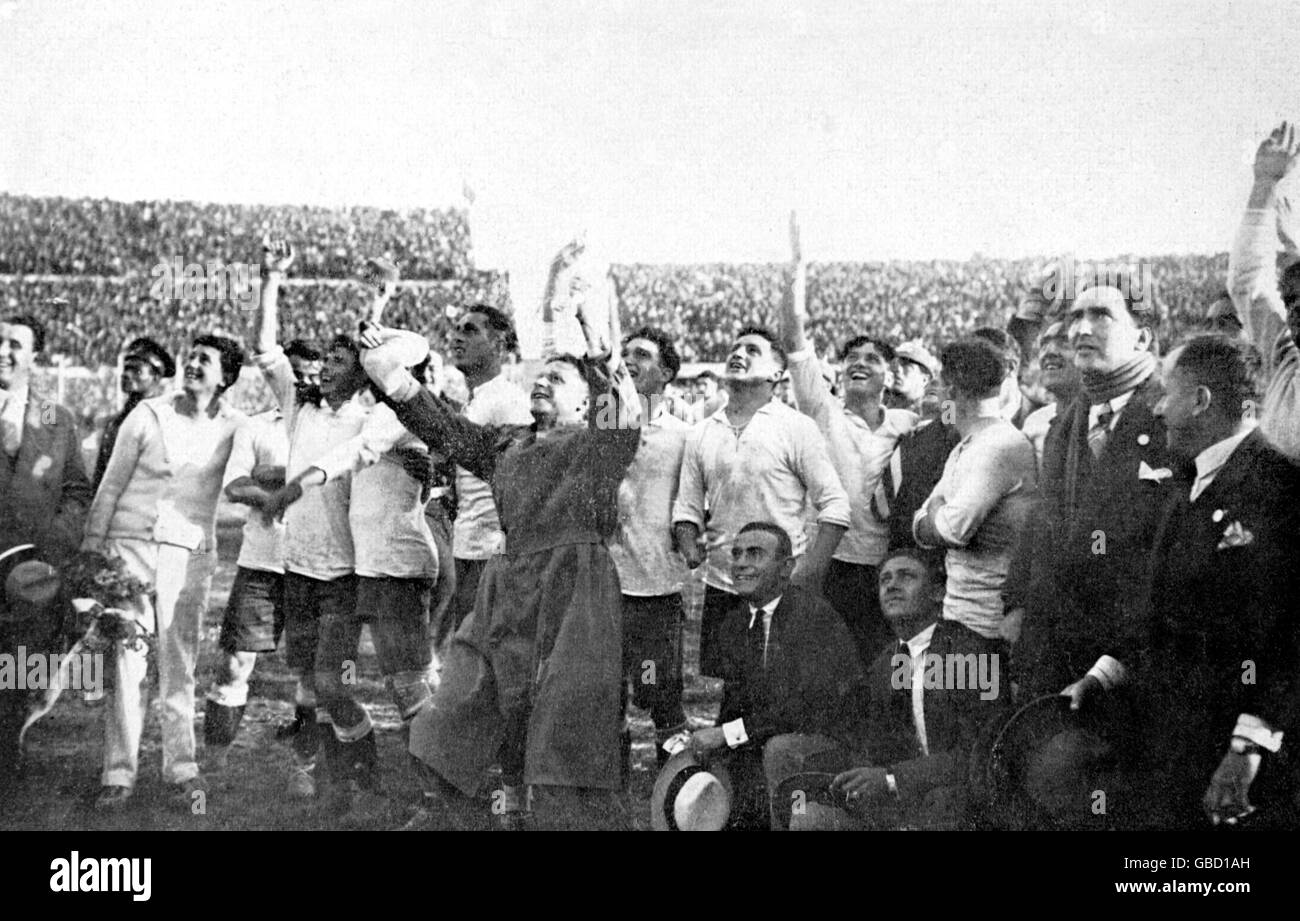
The 1930 World Cup: A Pioneering Tournament in Uruguay
The 1930 World Cup, officially known as the FIFA World Cup, held in Uruguay, marked the inaugural edition of this prestigious international football tournament. This groundbreaking event laid the foundation for what would become the most watched and celebrated sporting competition globally. The decision to host the first 1930 World Cup in Uruguay was significant, primarily because Uruguay was celebrating the centennial of its first constitution and had also won the gold medal in the football tournaments of the 1924 Paris Olympics and the 1928 Amsterdam Olympics. This article delves into the historical context, key events, participating teams, notable players, and the lasting legacy of the 1930 World Cup.
Background and Selection of Uruguay
In the late 1920s, FIFA, under the leadership of President Jules Rimet, sought to establish a global football championship. Several European countries, including Italy, Sweden, the Netherlands, Spain, and Hungary, expressed interest in hosting the inaugural tournament. However, Uruguay’s dual achievements in Olympic football and its willingness to cover the travel expenses of participating teams ultimately swayed FIFA’s decision. This was a crucial factor, as the Great Depression was beginning to impact economies worldwide, making transatlantic travel financially challenging for many European nations.
The selection of Uruguay as the host nation for the 1930 World Cup was formally announced in 1929. The Uruguayan government committed significant resources to building a new stadium, the Estadio Centenario, in Montevideo, to commemorate the country’s centennial. This stadium was designed to be the centerpiece of the tournament and a symbol of Uruguay’s commitment to football.
Challenges and Preparations
Despite Uruguay’s preparations, the tournament faced significant challenges. The Great Depression made it difficult for European teams to finance the journey to South America. Many European countries were hesitant to participate, and some initially declined FIFA’s invitation. Jules Rimet personally intervened, appealing to the national associations and even persuading the governments of some countries to provide financial assistance. Ultimately, four European teams – Belgium, France, Romania, and Yugoslavia – agreed to participate.
These teams traveled to Uruguay by boat, a journey that took several weeks. The long sea voyage presented logistical challenges, requiring careful planning to ensure the players remained fit and ready for competition. The teams used the time on board to train and acclimatize to the conditions they would face in Uruguay.
Tournament Format and Participating Teams
The 1930 World Cup featured 13 national teams: nine from the Americas and four from Europe. The teams were divided into four groups, with the winner of each group advancing to the semi-finals. The groups were structured as follows:
- Group 1: Argentina, Chile, France, Mexico
- Group 2: Brazil, Bolivia, Yugoslavia
- Group 3: Uruguay, Romania, Peru
- Group 4: United States, Paraguay, Belgium
The absence of several prominent European football nations, such as England, who were not affiliated with FIFA at the time, and other countries like Italy and Spain, detracted somewhat from the tournament’s overall prestige. Nevertheless, the 1930 World Cup showcased a diverse range of footballing styles and talents from across the globe.
Key Matches and Memorable Moments
The 1930 World Cup was filled with memorable matches and standout performances. In Group 1, Argentina emerged as the dominant force, winning all three of their matches, including a notable 1-0 victory over France. The French team, despite their loss to Argentina, secured a 4-1 win against Mexico, featuring the first penalty ever awarded in a World Cup tournament.
Group 2 saw Yugoslavia display their prowess, topping the group with victories over Brazil and Bolivia. Group 3 was straightforward, with Uruguay winning both their matches against Romania and Peru, demonstrating their strength on home soil. In Group 4, the United States surprised many by winning both their matches against Belgium and Paraguay, securing their place in the semi-finals.
Semi-Finals
The semi-finals pitted Argentina against the United States and Uruguay against Yugoslavia. Argentina defeated the United States 6-1 in a one-sided affair, showcasing their attacking prowess. In the other semi-final, Uruguay also recorded a convincing 6-1 victory over Yugoslavia, setting up a highly anticipated final between the two South American rivals.
The Final: Uruguay vs. Argentina
The final of the 1930 World Cup was played on July 30, 1930, at the Estadio Centenario in Montevideo. The atmosphere was electric, with a capacity crowd eager to witness the culmination of the inaugural tournament. The match was fiercely contested, reflecting the intense rivalry between Uruguay and Argentina.
Argentina took an early lead, but Uruguay fought back, eventually winning the match 4-2. The victory was a momentous occasion for Uruguay, cementing their status as the first-ever FIFA World Cup champions. The celebrations in Montevideo were jubilant, with the entire nation celebrating their team’s triumph.
Notable Players and Performances
Several players distinguished themselves during the 1930 World Cup. Guillermo Stábile of Argentina emerged as the tournament’s top scorer with eight goals. His prolific goal-scoring ability was instrumental in Argentina’s journey to the final. Other notable players included José Andrade of Uruguay, known for his exceptional midfield skills, and Bart McGhee of the United States, who scored the first goal of the tournament.
The Uruguayan team, led by captain José Nasazzi, was renowned for its strong defense and tactical discipline. Their collective performance was key to their success, demonstrating the importance of teamwork and cohesion in international football.
Legacy and Impact
The 1930 World Cup left a lasting legacy on the world of football. It established the FIFA World Cup as the premier international football tournament, paving the way for future editions that would captivate audiences worldwide. The tournament also helped to popularize football in new regions and fostered a sense of international camaraderie.
The success of the 1930 World Cup demonstrated the potential of football to unite people from different cultures and backgrounds. It set a precedent for future tournaments, which have continued to promote international understanding and goodwill. The Estadio Centenario, built for the tournament, remains a symbol of Uruguay’s footballing heritage and a testament to the country’s contribution to the sport.
The 1930 World Cup also had a significant impact on the development of football in South America. It showcased the talent and passion for the game in the region, helping to elevate the status of South American football on the global stage. The success of Uruguay and Argentina in the tournament inspired future generations of South American footballers.
Conclusion
The 1930 World Cup was a historic event that marked the beginning of a global football phenomenon. Despite the challenges and obstacles faced in its organization, the tournament was a resounding success, establishing the FIFA World Cup as the pinnacle of international football competition. The legacy of the 1930 World Cup continues to resonate today, reminding us of the power of football to unite and inspire people around the world. From the pioneering spirit of Uruguay as the host nation to the memorable matches and standout performances, the 1930 World Cup remains a significant chapter in the history of football. [See also: History of the FIFA World Cup] and [See also: Uruguay’s Footballing Heritage]
